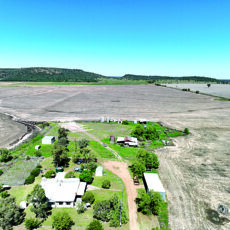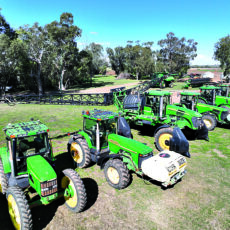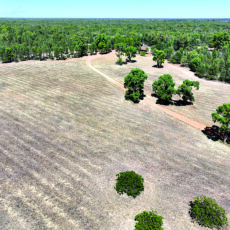Real estate has been around for a very long time.
From warring tribes seeking to control the most advantageous land, to feudal lords charging peasants rent for the land they occupied, through to the sophisticated system of property ownership and occupation that now exists, it has evolved significantly through the ages.
Its consistent place in history is no surprise when you consider it is one of the four basic human needs for survival – food, water, air and shelter.
Our definition of ‘shelter’ may have come a long way from decorating our cave with rock paintings, but there is no denying that the sense of ‘homeliness’ we feel walking into our own home has deep-seated roots in our psychology.
The recent rainy weather has been another reminder of this for me – listening to the rain and the wind lashing the window panes at night always conjures up feelings of gratitude for our warm dry home sheltering us from the storm.
As previously indicated, the importance of our choice of shelter has been especially prominent during the lockdown periods, with many realising it was time to upgrade the family cave and purchase a first, or bigger, family home.
This has been a key driver of growth in real estate markets across the country.
Additionally, real estate continues to be one of the preferred vehicles of choice for wealth creation for investors.
Currently we are fielding between 15-20 enquiries each week from investors seeking to secure properties in our region.
Wind back the clock two years and the number of weekly enquiries from investors could be counted on one hand, at most.
There is much to love about real estate as an investment tool.
Firstly, it is tangible – good old bricks and mortar give us that ‘safe as houses’ attitude because we can see, touch and feel the asset.
Compare that with other asset classes such as shares, bonds or more recently crypto-currency, these assets exist only on paper, or rather in binary code, and can feel unsettling for the uninitiated into these types of investments.
Real estate is also a stable asset class. Sure, property prices may rise and fall over time, but they do so without the volatility that you’ll find in investments such as the share market.
It is also a passive investment.
If you own an investment property, it is unlikely you will be daily monitoring the market to see if your property value has gone up and down and sweating on company share-holder reports.
There may be some maintenance at the property to do from time to time, but if you have a good management team looking after your property then it requires very little input from yourself to maintain ownership of this type of asset.
Leverage is another huge advantage of investing in real estate.
This means that with just a relatively small deposit you can then borrow the remainder of the purchase price to go out and secure your next investment property.
Given the recent growth in the market, you may even have available equity in your existing property that you can borrow against to use as your deposit for an investment property.
Given the low interest rates, there is every chance that the rent you will receive will be more than enough to cover the holding costs of the property, creating a cash-flow positive investment.
Long-term capital growth is the final point to be made about real estate investments.
While growth in real estate may not have the allure of the ‘fast buck’ that other investment classes tout, time has shown the reliably consistent growth that real estate offers over the long term, with relatively low down-side risk.
So if you are in it for the long haul, then it’s hard to find a better place to park your investment dollars then in the real estate market.
The recent surge in investment enquiry for our region can be further explained by the insights from real estate analyst and commentator Terry Ryder, who has this to say about our region:
The Gunnedah and Narrabri economies have two powerful forces underpinning them: agriculture and the resources sector.
The Southern Plains area, including Gunnedah and Narrabri shires, has the highest agricultural productivity in NSW while the Gunnedah Basin holds extensive coal and gas reserves.
The recent approval of the $3.6 billion Narrabri gas project and several solar projects – all declared State
Significant Projects – will generate thousands of jobs, boosting local businesses through wages expenditure.
The nature of the two industries requires good transport links and a strong manufacturing support base, both of which help to provide diversity to the local economy.
Construction of the Inland Rail project, now under way, will bring further benefits to the region, through lower transport costs and faster delivery times.
In addition, the Gunnedah Hospital is to receive a $53 million upgrade while the University of New England plans to develop a campus in nearby Tamworth with the first courses available from 2031.
This expansion of infrastructure, which also includes improvements to roads, leisure facilities and water supplies, only adds to the liveability and appeal of the Gunnedah-Narrabri region.
Future prospects
The Namoi Valley’s economy has been traditionally reliant on agriculture and mining and the recent approval of the $3.6 billion Narrabri gas project promises to be a major goal-kicker for the region.
The project involves the progressive development of a coal seam gas field over 20 years with up to 850 gas wells and ancillary infrastructure, including gas processing and water treatment facilities.
The Narrabri gas project has the potential to supply enough natural gas to meet up to half of NSW’s natural gas demand.
Creating 1300 construction and 200 local operational jobs, the project will also inject $14.5 million into the local economy through a Voluntary Planning Agreement with Narrabri Shire Council.
Further benefits could arise with the owner, Santos, planning to turn the salt by-product of the coal seam gas scheme into baking soda.
The proposed $1.2 billion Hunter Gas pipeline would run from the Wallumbilla gas hub in Queensland to the Narrabri gas project in New South Wales.
The pipeline approval window has been extended, to allow for commencement of the Narrabri gas project.
A $700 million expansion is proposed for the Whitehaven Coal mine, and a $515 million expansion has been proposed by Idemitsu for its Boggabri Coal Mine, which together would create more than 1000 jobs.
Feel free to contact us for a full copy of Terry’s report, which we produce monthly.
So with exciting economic times ahead, and with our state finally enjoying some post-lock down freedom again, now is a great time to consider your own future real estate plans, be them upgrading the family ‘cave’ or finding that next investment property.
See more from Ben:
- Team quality can make or break a business
- Often asked question: Should I rent my home or should I sell?
- Life lessons from real estate









